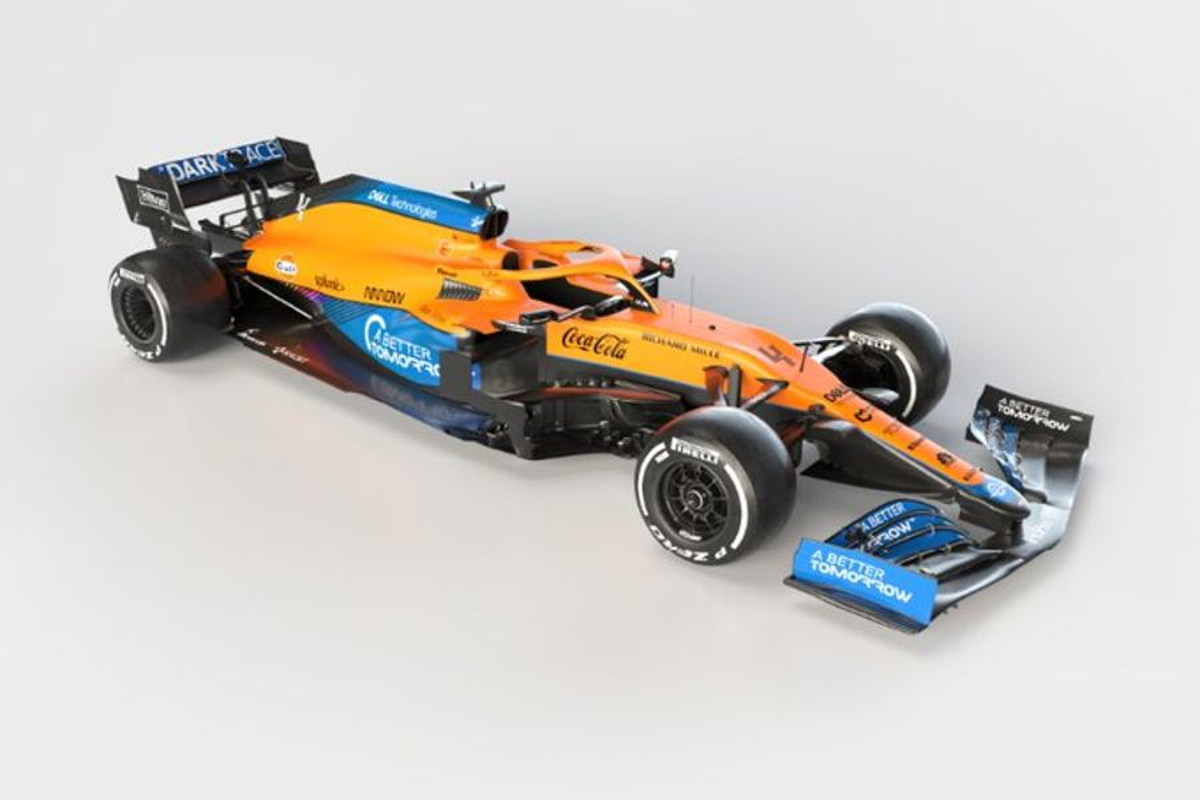
McLaren: What has changed on the MCL35M?
McLaren: What has changed on the MCL35M?

McLaren's launch of its MCL35M provided the first glimpse of how Formula 1's aerodynamic reforms for 2021 will look on what is essentially old machinery.
Given the delay until next season of more wide-sweeping regulations changes, the rules for this year were tweaked to halt the year-on-year progression of downforce attained by teams, with safety the main factor in the decision.
In addition to the technical directives changing the aesthetic of the car, McLaren has had the added complication of switching engine supplier from Renault to Mercedes between seasons.
So where does this season's McLaren differ from last year's iteration?
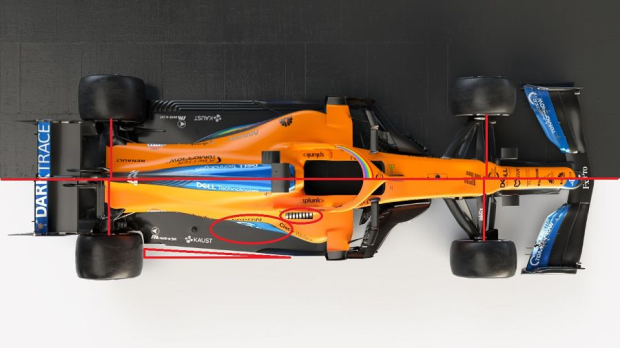
Floor assembly
The major aerodynamic change that we can expect to see on all cars this season is a redesign to the floor structure in order to cut the downforce levels achieved around the back-end of the cars.
As seen on the MCL35M, the intricacies of the previous floor design are gone, with a much more straightforward, flat surface with no cut-outs in the physical structure.
The rear section of the floor is also inverted towards the inside of the rear wheel, changing the airflow around the rear of the car.
This seems a fairly basic design, with the team potentially keeping its cards close to its chest as it was the first to reveal. It is unlikely, however, wholesale changes will take place ahead of the first race.
Sidepods and engine cover
With the Mercedes power unit integrated into a car that was essentially designed to house a Renault engine, necessary changes have had to be made despite last season's car homologation.
Technical director James Key has explained that the team has altered numerous aspects of the car within the technical regulations to integrate the new engine.
"[We had to] make the changes we needed to the homologated parts so that was to change the chassis, which of course has to change with a new engine and the energy store, aspects of the gearbox for packaging purposes and after that it is all identical to last year," he explained.
Whilst all of these changes are hidden underneath the slin of the MCL35M, there are noticeable changes to the packaging around the new power unit.
The sidepods have been pinched the lower down the bodywork you go, with a widening effect higher up the structure creating a helix-shaped, hourglass-figure look, akin to the Mercedes W11's configuration at the tail-end of last year.
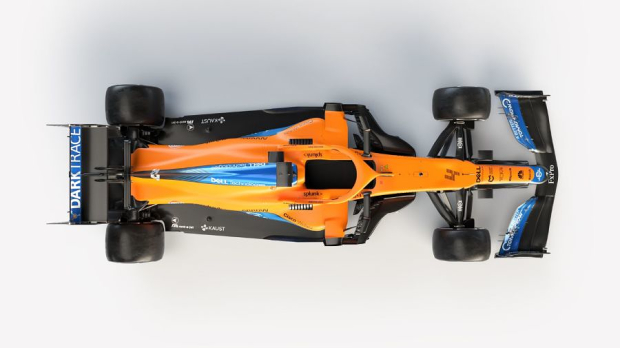
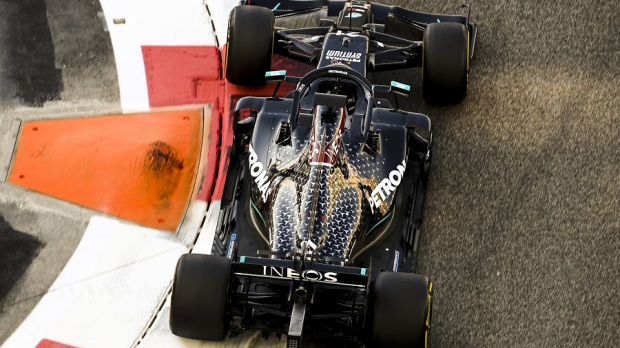
Also adorning the side of the new McLaren are cooling 'gills' not seen on last year's car.
This is potentially a derivative of the split-turbo concept of power unit Mercedes run compared to the more traditional-set engine layout of the Renault, with the different philosophies likely causing different cooling solutions.
Gills are also featured on the Racing Point RP20 of last season, although not on the Williams FW43 - the other Mercedes-powered car on the grid.
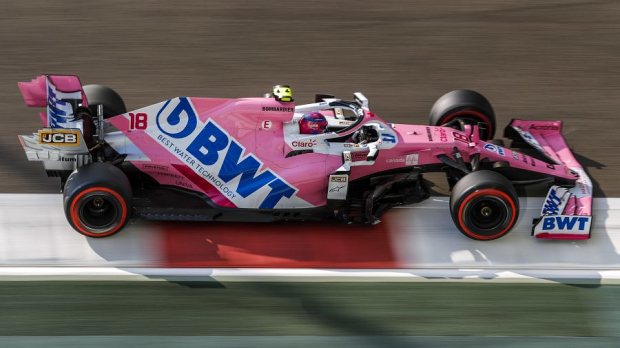
Wheelbase
A very subtle change, but this season's MCL35M has shifted the wheelbase slightly compared to its predecessor due to a longer gearbox bell housing accommodating the new engine.
Front-end package
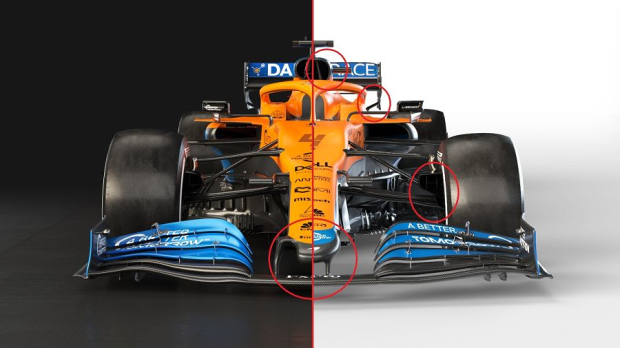
Much of the front end of the new McLaren has been left unchanged from how the car finished last season due to the homologation deadline mid-way through.
The developments made by the team prior to the Eifel Grand Prix have remained on the car, with the differences made clear between the two launch specifications of both the MCL35 and the MCL35M.
The brake ducts have a different shape to accommodate both aerodynamic and cooling efficiency, whilst the nose structure was changed to alter the airflow underneath the car.
Looking further back, the airbox has been modified slightly to allow for a different flow of air to aid with the cooling of the new Mercedes engine, much as can be seen with the addition of the sidepod gills.
The aerodynamic updates to the rear wing end-plate will no doubt evolve over the early part of the season as the team attempts to claw back some of the downforce lost through the new directives.
It is important to note the front wing assembly, the bargeboard layout and rear wing will all likely be run in different specifications come pre-season testing in Bahrain in early March.
Related
Change your timezone:
Latest News

Hamilton dealt China blow after major FIA decision as Ricciardo given huge Horner warning - GPFans F1 Recap
- 1 hour ago

F1 team unveil star-studded lineup in China
- 2 hours ago

F1 Qualifying Today: Chinese Grand Prix 2024 start times, schedule and TV
- 3 hours ago

Horner delivers threat to Ricciardo over Red Bull pressure
- 3 hours ago

F1 Sprint Race Today: Chinese Grand Prix 2024 start times, schedule and TV
- Yesterday 21:27

Wolff left FUMING with Mercedes despite amazing Hamilton lap
- Yesterday 20:57
Related news

Young F1 star set to make McLaren debut in injury replacement

F1 star reveals how Verstappen and Hamilton rivalry influenced key decision

Norris reveals CRUCIAL save that kept him at McLaren

F1 star hints future Ferrari move after Hamilton influence
F1 Standings

Drivers
- Oliver Bearman
- Charles Leclerc
- Carlos Sainz
- Lando Norris
- Oscar Piastri
- Pierre Gasly
- Esteban Ocon
- Sergio Pérez
- Max Verstappen
- Alexander Albon
- Logan Sargeant
- Lewis Hamilton
- George Russell
- Nico Hülkenberg
- Kevin Magnussen
- Fernando Alonso
- Lance Stroll
- Valtteri Bottas
- Zhou Guanyu
- Daniel Ricciardo
- Yuki Tsunoda
Races
-
 Gulf Air Grand Prix of Bahrain 2024
Gulf Air Grand Prix of Bahrain 2024
-
 Saudi Arabian Grand Prix 2024
Saudi Arabian Grand Prix 2024
-
 Grand Prix of Australia 2024
Grand Prix of Australia 2024
-
 MSC Cruises Grand Prix of Japan 2024
MSC Cruises Grand Prix of Japan 2024
-
 Grand Prix of China 2024
Grand Prix of China 2024
-
 Miami Grand Prix 2024
Miami Grand Prix 2024
-
 Gran Premio dell'Emilia Romagna 2024
Gran Premio dell'Emilia Romagna 2024
-
 Grand Prix of Monaco 2024
Grand Prix of Monaco 2024
-
 Grand Prix du Canada 2024
Grand Prix du Canada 2024
-
 Gran Premio de España 2024
Gran Premio de España 2024
-
 Grand Prix of Austria 2024
Grand Prix of Austria 2024
-
 Grand Prix of Great Britain 2024
Grand Prix of Great Britain 2024
-
 Grand Prix of Hungary 2024
Grand Prix of Hungary 2024
-
 Grand Prix of Belgium 2024
Grand Prix of Belgium 2024
-
 Heineken Dutch Grand Prix 2024
Heineken Dutch Grand Prix 2024
-
 Grand Prix of Italy 2024
Grand Prix of Italy 2024
-
 Grand Prix of Azerbaijan 2024
Grand Prix of Azerbaijan 2024
-
 Grand Prix of Singapore 2024
Grand Prix of Singapore 2024
-
 Grand Prix of the United States 2024
Grand Prix of the United States 2024
-
 Gran Premio de la Ciudad de Mexico 2024
Gran Premio de la Ciudad de Mexico 2024
-
 Grande Prêmio de São Paulo 2024
Grande Prêmio de São Paulo 2024
-
 Heineken Silver Las Vegas Grand Prix 2024
Heineken Silver Las Vegas Grand Prix 2024
-
 Qatar Grand Prix 2024
Qatar Grand Prix 2024
-
 Grand Prix of Abu Dhabi 2024
Grand Prix of Abu Dhabi 2024
About GPFans
GPFans is a multi-platform, multi-language brand dedicated to Formula One coverage. We bring you all the ins and outs of the sport, 24/7, everything from up-to-the-minute news and features to the latest viral stories and clips.We believe that a new generation of exciting, outspoken drivers will make F1 more popular than ever before, and we want to give our users access to as much of their heroes as possible, on and off the track. From Lewis Hamilton to Max Verstappen, Daniel Ricciardo to Sebastian Vettel, we provide in-depth analysis of every every Grand Prix in the season, from Australia to Abu Dhabi.
With Formula One under the new ownership of Liberty Media, how the sport is being covered is evolving, and GPFans will look to be at the heart of this progression into new media, as one of the fastest-growing sites covering the king of motorsports.
Follow us on your favorite social media channel
Corporate & Media
 Innovatieweg 20C
Innovatieweg 20C7007 CD, Doetinchem, Netherlands
+31645516860



















 Gulf Air Grand Prix of Bahrain 2024
Gulf Air Grand Prix of Bahrain 2024  Saudi Arabian Grand Prix 2024
Saudi Arabian Grand Prix 2024  Grand Prix of Australia 2024
Grand Prix of Australia 2024  MSC Cruises Grand Prix of Japan 2024
MSC Cruises Grand Prix of Japan 2024  Grand Prix of China 2024
Grand Prix of China 2024  Gran Premio dell'Emilia Romagna 2024
Gran Premio dell'Emilia Romagna 2024  Grand Prix of Monaco 2024
Grand Prix of Monaco 2024  Grand Prix du Canada 2024
Grand Prix du Canada 2024  Gran Premio de España 2024
Gran Premio de España 2024  Grand Prix of Austria 2024
Grand Prix of Austria 2024  Grand Prix of Hungary 2024
Grand Prix of Hungary 2024  Grand Prix of Belgium 2024
Grand Prix of Belgium 2024  Grand Prix of Azerbaijan 2024
Grand Prix of Azerbaijan 2024  Grand Prix of Singapore 2024
Grand Prix of Singapore 2024  Gran Premio de la Ciudad de Mexico 2024
Gran Premio de la Ciudad de Mexico 2024  Grande Prêmio de São Paulo 2024
Grande Prêmio de São Paulo 2024  Qatar Grand Prix 2024
Qatar Grand Prix 2024  Grand Prix of Abu Dhabi 2024
Grand Prix of Abu Dhabi 2024